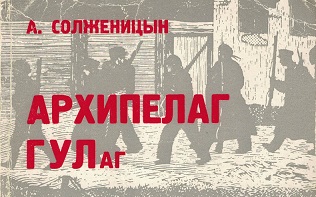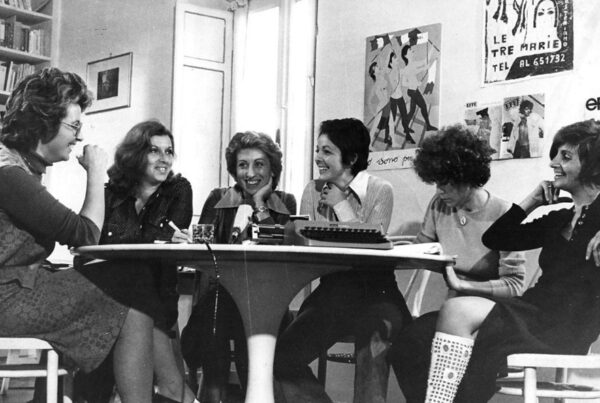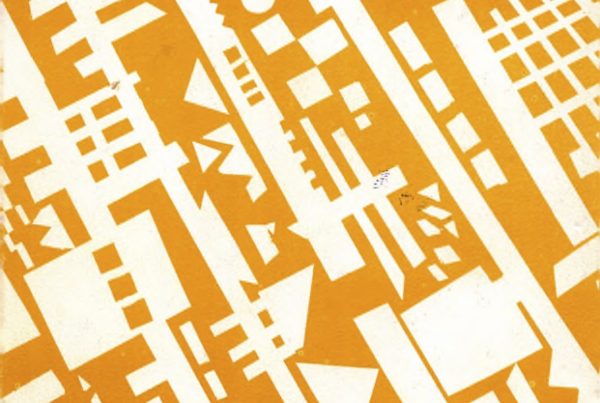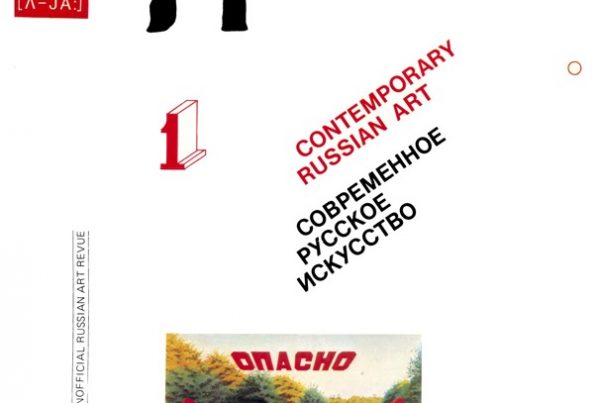
Cover of the first edition of “The GULag Archipelago” by A. Solzhenitsyn.
Title:
Arkhipelag Gulag [The Gulag Archipelago]
Author: Aleksandr Isaevich Solzhenitsyn (1918–2008)
Years of Editing: 27th April 1958 – May 1968
Year of First Publication: 1973
Publisher: YMCA Press
Place of Publication: Paris
Description:
The idea of a work, with the title Arkhipelag Gulag (The Gulag Archipelago), describing the Soviet concentration camp system from its origins and testifying the experiences and fates of former prisoners first came to Aleksandr Solzhenitsyn in the spring of 1958, in Ryazan’. A few years later, when One Day in the Life of Ivan Denisovich (1959) started to spread through the samizdat and was then published in “Novy Mir” (11, 1962), material for the new book in the form of stories, memoirs and letters began to reach the author. In the first pages of Arkhipelag, 227 witnesses are commemorated as co-writers of a common “monument”, without their names being mentioned to avoid recognition by the authorities. A complete list (by now of 257 names) only appears in the 2006 edition (Arkhipelag Gulag 1918-1956. Opyt chudožestvennogo issledovanija, tt. 1-3, U-Faktorija, Еkaterinburg).
Solzhenitsyn’s “literary fact-finding essay” (the hybrid genre to which the work belongs is defined in the subtitle) was completed “under tight secrecy” (Solzhenitsyn 2001, tome II: 718). When, in September 1965 the KGB, confiscated his archive entrusted to a friend in Moscow, the writer, who feared arrest, managed to keep safe the already finished chapters of Archipelago and his preliminary materials. He kept writing while running “from one hiding place to another” (ibid.), without ever being able to have the whole text in front of him: “this spasmodic feverishness, this incompleteness, are the distinctive feature of our harassed literature” (ibid.). In 1967 he completed the editing, and hid copies of Parts I-VI in several places. In May 1968 he completed a new revised version: “I could and had to lay hands on this work and finish adjusting it. Now some friends have read it. They helped me notice serious flaws. I did not dare to do the same in a wider circle” (ibid.: 719).
This last draft was transcribed, reproduced on microfilm and brought to the West thanks to the help of the most trusted of the “invisible”, friends who helped him in the years he was in hiding, risking prison themselves. Through other clandestine channels he managed to a get second copy of Archipelago beyond the Iron Curtain in 1971, that, from February 1972, was translated into German and Swedish (cf. Solzhenitsyn 1996: 502); the first two translations to appear in the West, where Archipelago would have had an explosive impact. Solzhenitsyn, who in the meantime had resumed work on another secret project (the novels of the Red Wheel Cycle, dedicated to the revolution), still considered it premature to publish Archipelago. But in August 1973 the KGB seized a copy of the first typewritten version, kept in Leningrad by an “invisible” aide, who had broken the rule for burning old drafts.
The woman was released after days of inquisition and committed suicide. When Solzhenitsyn learned of this, he immediately gave the signal for the book’s publication, and on 28th of December 1973, the YMCA Press, in Paris under the direction of his friend Nikita Struve, issued the first volume (Parts I and II) of The Gulag Archipelago. There followed a press campaign against Solzhenitsyn, who was arrested on 12nd February 1974 and expelled from the USSR the day after. The second volume (Parts III and IV, YMCA Press) was published in Paris in the same year, and the third volume in 1975 (Parts VI and VII, YMCA Press). A final revised and extended draft was published during Solzhenitsyn’s exile in Vermont in 1980 (YMCA Press). In the USSR, The Gulag Archipelago was one of the most dangerous yet most read samizdat works, illegally copied also for profit, with very high “print-runs”. The first single volume edition came out in 1990, after an incomplete serialization in “Novy Mir” in 1989 (numbers 8-11). From 1974, translations of The Gulag Archipelago had a significant impact in the West, but Italy was an exception; Italian intellectuals, not only on the left, were largely silent. Pietro Citati, one of the few authoritative reviewers of the work, wrote: “I think it is more useful to completely forget the gloomy sequence of perverted ideas, violence and torture, which began in 1789 […] perhaps only a total oblivion [ …] can set us free from that terrible attraction” (Citati 1974: 12).
Maurizia Calusio
[30th June 2021]
Translation by Alice Bucelli
Russian editions
- Solzhenitsyn A., Arkhipelag Gulag 1918-1956. Opyt khudozhestvennogo issledovaniia, t. 1, YMCA Press, Paris 1973; t. 2 1974; t. 3, 1975.
- Solzhenitsyn A., Arkhipelag Gulag 1918-1956. Opyt khudozhestvennogo issledovaniia, in Id., Sobranie sochinenii v 20 tomakh, tt. 5-7, YMCA Press, Vermont – Paris 1980.
- Solzhenitsyn A., Arkhipelag Gulag 1918-1956. Opyt khudozhestvennogo issledovaniia, tt. 1-3, “U-Faktoriia”, Еkaterinburg 2006, http://www.solzhenitsyn.ru/books/arkhipelag-gulag/, online (last accessed: 30/06/2021).
Translations
- Solschenizyn A., Der Archipel Gulag 1918-1956, 1, A. d. Russ. v. A. Peturnig [E. Markstein], Scherz, Bern – München 1973-74; 2, A. d. Russ. v. A. Peturnigund E. Walter, 1974; 3, 1976.
- Solsjenitsyn A., Gulag-arkipelagen:1918-1956: ett försök till konstnärlig studie, översättning av H.Björkegren, Wahlström & Widstrand, Stockholm 1974-1976.
- Soljénitsyne A., L’Archipel du Goulag, Éd.du Seuil, Paris1974, t. I, trad. révisée par J. Johannet; t. II-III, trad. par G. et J. Johannet, 1974-1976.
- Solzhenitsyn A., The Gulag Archipelago 1918-1956, vols. I-II, trad. Th. Whitney, Harper & Harper, New York; Collins, London, 1974-1975; vol. III, tr. H.T. Willets, Harper & Harper, New York; Collins, London, 1978.
- Solženicyn A., Arcipelago Gulag, trans. by M. Olsùfieva, Mondadori 1974; vol. II-III, trans. by M. Olsùfieva, ed. by S. Rapetti; 1975-1978; ed. by M. Calusio, trans. by M. Olsùfieva, I Meridiani Mondadori 2001 (revised ed.); Oscar Mondadori 2013 (extended ed.).
Bibliography
- Nivat G., Soljénitsyne, Les Édition du Seuil, Paris 1980, http://classiques.uqac.ca/contemporains/nivat_georges/soljenitsyne/Soljenitsyne_avec_photos.pdf, online (last accessed: 30/06/2021).
- Saraskina L., Aleksandr Solženicyn, Molodaja Gvardija, Moskva 2008 (it. trans. Solženicyn, ed. A. Dell’Asta, San Paolo, Milan 2010).
- Solženicyn A., Bodalsja telenoks dubom. Očerki literaturnoj žizni, IMKA Press, Paris 1975 (it. trans. La quercia e il vitello. Saggi di vita letteraria, trans. by M. Olsùfieva, ed. S. Rapetti S., Mondadori, Milan 1975), Soglasie, Moscow 1996, http://imwerden.de/publ-5080.html, online (last accessed: 30/06/2021) (revised ed.).
- Thomas D. M., Alexander Solzhenitsyn. A century in his Life, Little, Brown and Company, London 1998.
To cite this article:
Maurizia Calusio, The Gulag Archipelago (A. Solzhenitsyn), in Voci libere in URSS. Letteratura, pensiero, arti indipendenti in Unione Sovietica e gli echi in Occidente (1953-1991), a cura di C. Pieralli, M. Sabbatini, Firenze University Press, Firenze 2021-, <vocilibereurss.fupress.net>.
eISBN 978-88-5518-463-2
© 2021 Author(s)
Content license: CC BY 4.0




